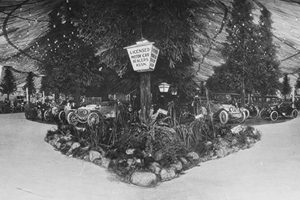By Matt Applegate, Regional Marketing Manager, Federated Mutual Insurance Company
If you aren’t committed to incorporating risk management into the culture of your business, a seemingly small change can make it all crumble, leaving you without a solid foundation to help prioritize the safety of your workers and customers. If you intend to make risk management a core value of your business, your risk management culture needs to be strong enough to withstand any obstacle.
What’s at Stake?
Every injury, every lawsuit, every poor hire, every missed safety opportunity hurts your dealership. Insurance helps pay for the direct costs of a loss, such as property damage, medical bills, and legal expenses. But your business is responsible for the hidden expenses — hiring and training new employees, lost productivity, low morale and potentially higher insurance premiums.
Don’t forget about one of your business’s most important assets: its reputation. You’re able to open your doors every day because you have demonstrated a history of being reliable to potential and existing customers and employees.
It’s not hard to imagine a scenario in which your hard-earned reputation disappears. An employee who is improperly trained or not following safety protocols could make a costly mistake, injuring him or herself or putting an indispensable piece of equipment out of commission. Just like that, you are dealing with an insurance claim (and possibly a lawsuit), and you can’t fulfill your obligations to your customers. The spiral continues. Your employees, who trust that they are working in a safe environment, could begin to look for employment elsewhere. And your customers, who depend on the products and services you provide, could find a new place to do business, leaving you with a diminished book of business and a damaged bottom line.
Personnel Changes
A management change, while significant in many ways, shouldn’t decrease your workplace-safety results. Consider this story from a real business:
The safety manager of a business retired, taking with him nearly all knowledge of the company’s safety program. When the new safety manager joined months later, he found elements of the company’s risk management program missing or lacking. Records, which were all kept on paper, were nowhere to be found. The new safety manager had the unenviable task of rebuilding the program while making sure the business’s day-to-day needs were fulfilled.
To combat the effects of personnel changes, a business must deliver a consistent and deliberate safety message to its employees. Documents, including processes and records, should be kept — and backed up — where any member of management can access them to ensure a smooth transition upon the departure of a safety manager.
New Circumstances
What happens when the rules change? Maybe regulators have added or modified workplace safety requirements. Or perhaps your business begins using new equipment or offering new products or services to respond to market demands. A relaxed attitude toward safety won’t help you keep your workforce informed. Members of a culture that focuses on risk management readily adapt and act on new safety measures — sometimes before management even requires them, because that’s just the way things are done.
Embraced All the Way Up
When it comes to prioritizing safety, business leaders and risk management professionals agree: It has to start at the top. Business owners must believe in the importance of safety and model the behaviors that will help keep employees — and by extension, the business — safe. A positive example from leadership will likely be reflected throughout the next levels of management and frontline employees. The influence a well-respected manager has on employee behavior cannot be overstated.
If preventing workplace injuries or accidents isn’t a primary and permanent focus, the possibility of letting things slip is very real — and the consequences could be severe.
Matt Applegate
Regional Marketing Manager, Federated Mutual Insurance Company
This story appears in Issue 3 2020-21 of the California New Car Dealer Magazine.







